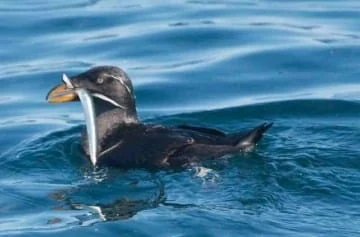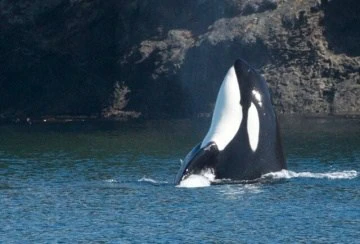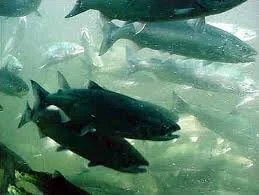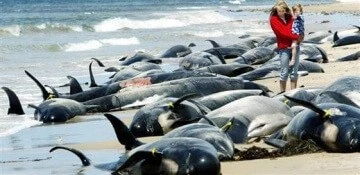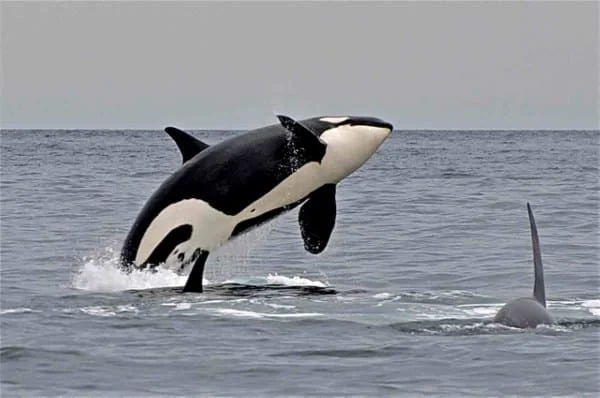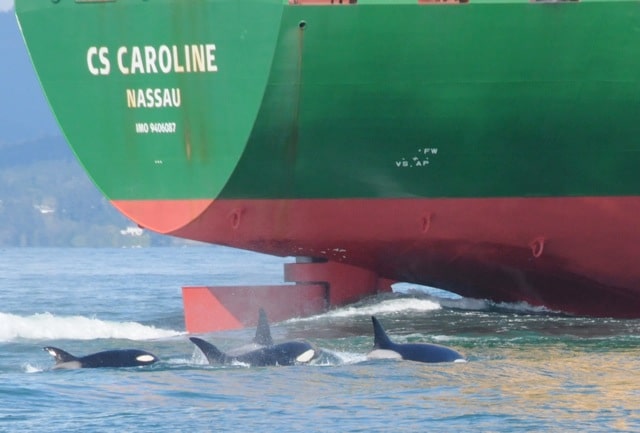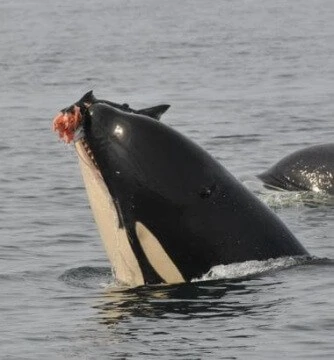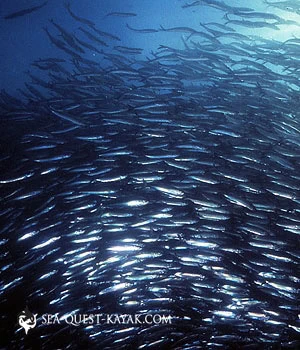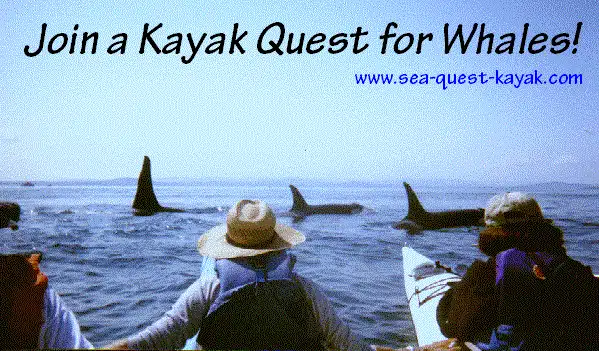September Report: Kayaking with Orcas in San Juans – Farewell to Summer
September is a gorgeous month for kayaking in the San Juan Islands as it ranks as the third driest and warmest month of the year. September averages just a bit more than an inch of rain for the entire month so kayak camping expeditions are usually very comfortable. As the general tourism activities wind down after Labor Day, the San Juan Islands become a quiet escape for savvy kayakers. Killer whale watching activity in Washington begins to transition in September as most of the migrating salmon have passed by San Juan Island en route to the mainland spawning rivers. The orcas respond by traveling further away from the San Juans in pursuit of late migrants and scattered resident salmon. Absences during these forays grow longer and sometimes the whales are not seen for several days in a row on our kayak tours in the San Juan Islands. This effect is felt the most on the shorter kayak tours out of Friday Harbor, as the more time one spends kayaking in the orca whales habitat the more likely you will have success. A rebounding population of humpback whales in the San Juan Islands usually reaches its peak in September as schools of juvenile herring attract them. The baitfish also keep the more common minke whales locked into their favorite summer feeding sites in the San Juans. By winter, all three species of whales will disperse over great distances and sightings in the Salish Sea of Washington will become uncommon by November. Huge seals migrate into the San Juan Islands beginning in September. The California sea lion is the size of a black bear while the Stellar sea lion grows to the same size as a Kodiak brown bear! Although their huge size and throaty roars sound intimidating, kayaking with sea lions is safe as long as you treat them with the respect they deserve. Sea lion numbers in the San Juan Islands continue to build through autumn as they over-winter is good numbers. Dall’s porpoise reach their peak abundance in September – for reasons still unknown. Perhaps they are chasing the herring, or maybe there is an influx of small squid, another favorite prey. Maybe they just enjoy the longer absences of the orca whales. Even though the resident orcas rarely ever harass the porpoise, the little ones probably feel safer when the killer whales aren’t around as frequently. September is a great month for bird watching tours in Washington, both by land or kayak. Birds reach their annual peak of diversity and abundance in autumn. Local breeders are joined by migrants from the interior of North America, and the coasts of Alaska and British Columbia. There are several species of marine birds that do a reverse migration from Mexico, California, and Oregon, just to feed on the herring massing in the San Juan Islands. The hardier species will stay for the winter and return home for spring breeding. Here are the September whale watching results from our kayaking tours in the San Juan Islands: We found orca whales on 33% of our camping trips. Two out of three of our 5-day San Juan kayak expeditions saw orca whales for a 67% success rate. Our 3-day San Juan kayaking trips were quite unlucky and unexpectedly found killer whales on only one of four trips. On several occasions they missed seeing the orcas by just a few minutes according to other observers! The same poor luck was felt on the 2-day San Juan kayak tours as they also found the orcas on only one of four kayak tours. Three out of four of the above camping trips saw either Dall’s porpoise or harbor porpoise, the smallest of the toothed whales that live in the San Juan Islands. There were only three unlucky camping adventures in September that didn’t observe either a pod of killer whales or porpoises, while more than a quarter got to see both the large whales and their little cousins on the same kayak tour. Our 1-day San Juan kayaking trips succeeded in finding at least one species of cetacean on 4 out of 5 trips in September for a 79% success rate. The killer whales graced nearly half of the day trips for a 42% success rate. Join a Kayak Quest for Whales in the San Juan Islands near Seattle, Washington All photo credits thanks to supreme San Juan Island whale watching captain and photographer Jim Maya.

